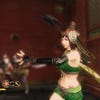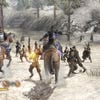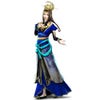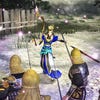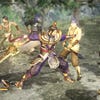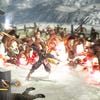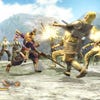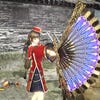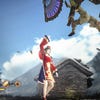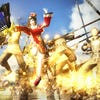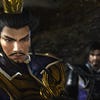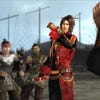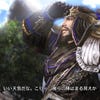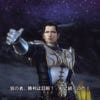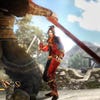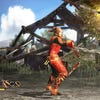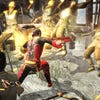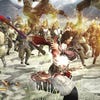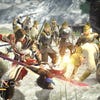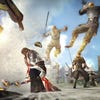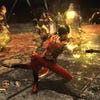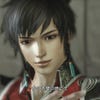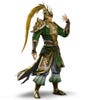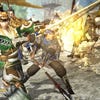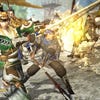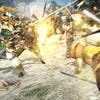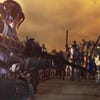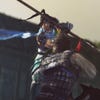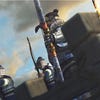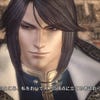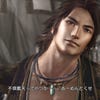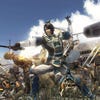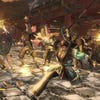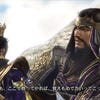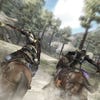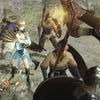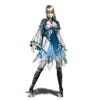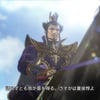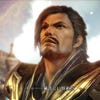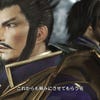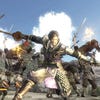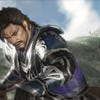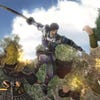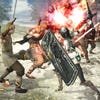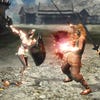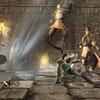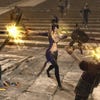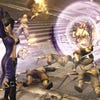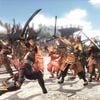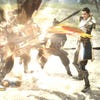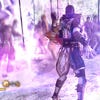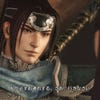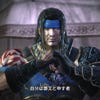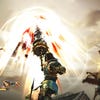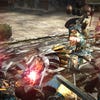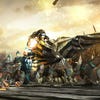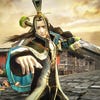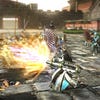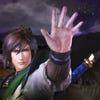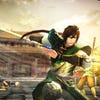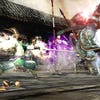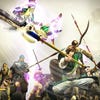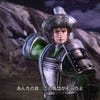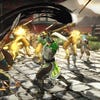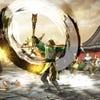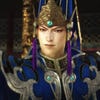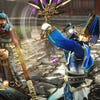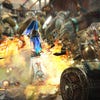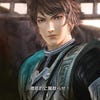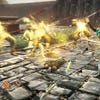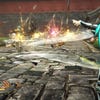Dynasty Warriors 7
Death by a thousand cuts.
The Dynasty Warriors series has always had something of an uneasy relationship with historical accuracy. On the one hand, Dynasty Warriors 7 is a game that periodically interrupts its bombastic take on the Wars of the Three Kingdoms to give you a written test on Second Century Chinese history. Questions such as "Which of Xiahou Dun's eyes was shot with an arrow during battle?" and "What colour was Sun Quan's beard?" are categorised as "easy".
On the other hand, Dynasty Warriors 7 is a game introduced by a cinematic in which a Chinese warrior in full armour fly-kicks a horse in the face before sprinting vertically down a waterfall in order to catch a falling baby. It's an A-level history class taken by Michael Bay: the colour of the beard may be historically accurate, but you'll probably struggle to pick it out behind the meteor shower of embellishment.
Even so, the latest iteration of Koei's hack-and-slasher leans heavily on the history books to provide the framework for its Story Mode. Four campaigns – one for each of the Shu, Wu, Wei and Jin factions – are on offer. Each slips you into the chain mail of a clutch of key officers and generals taking to the battlefield in a bid to unite China, and you get to taste some of the friendships, feuds and rivalries that characterised the period along the way.
The story, delivered by low-rent voice actors in dialogue untroubled by subtlety or nuance, is surprisingly engaging. It begins with the Yellow Turban Uprising, a peasant revolt that broke out in 184 AD in the wake of a brutal famine. Primarily, the narrative is shunted along by cut-scenes that bookend each sprawling battle – but, taking a cue from offshoot Dynasty Warriors: Strikeforce, you can strike up simple conversations with rank-and-file soldiers and other officers when exploring the occasional battle camp.
Key encounters take much the same format as in previous Warriors games. There's some rearrangement of the core battle systems that makes this one of the stronger titles in the series – and certainly an improvement over its immediate predecessor.
As ever, the odds seem vividly stacked against you as you head out, often single-handed, into a sea of spear-wielding opponents. In reality, the majority of these foes are blade-fodder, jabbing lazily at you every few seconds and barely putting up a fight before you sweep them into a oblivion like so many heads of corn.
Each squadron, however, is led by a rival officer, whose name (plundered from the history books) appears above his or her head, and who has many of the moves and tricks available to you. Strategy comes from managing the battlefield carefully to avoid being in a situation where you are fighting several officers at once.
Each character you play carries two switchable weapons, and combos are built from stringing together light and hard attacks. Each officer also has an EX move that can be tacked on to the end of combos when using their preferred weapon type, in order to create more powerful strings. Switching weapons mid-combo with a tap of the right bumper will often toss your opponent into the air, allowing you to juggle them and continue the combo as in a Capcom fighting game. There's some skill in the timing.
As you defeat enemies, you fill a 'Musou' special gauge. Like Street Fighter IV's Ultras, Musou specials are powerful attacks that come bundled with their own introductory cinematic, during which time slows down before the explosion of fireworks and fury. Tacking a Musou attack onto the end of a 12-hit weapon-switching combo is extremely satisfying, and to some extent defies those critics who claim this series is nothing more than a brain-dead button-masher.


